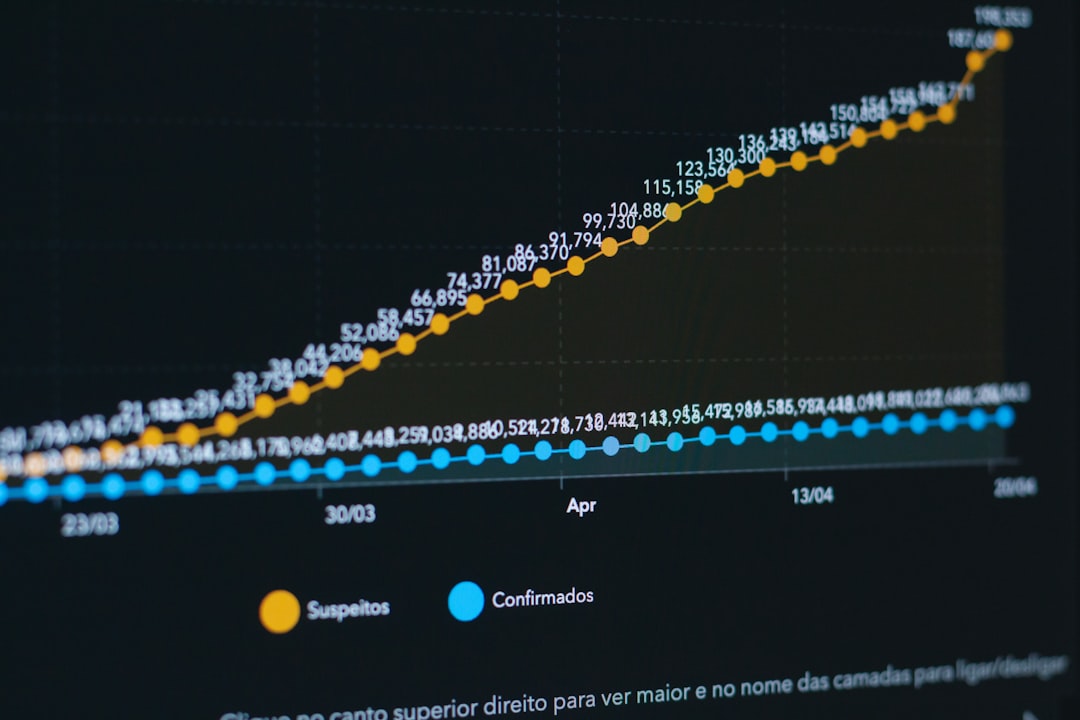In the realm of scientific inquiry, researchers often encounter data that defies explanation, leading to what are commonly referred to as “mysterious spikes.” These anomalies can manifest as sudden increases or decreases in data points that do not align with established patterns or expectations. Such spikes can arise in various fields, from environmental science to medicine, and they pose significant challenges for scientists striving to draw accurate conclusions from their research. The presence of these unexplained phenomena raises critical questions about the reliability of data and the integrity of scientific findings.
The intrigue surrounding mysterious spikes lies not only in their unpredictability but also in their potential implications for scientific understanding. When researchers observe a spike, it can lead to a cascade of inquiries: Is this data point an outlier, or does it signify a new discovery? How should scientists interpret these anomalies, and what steps should they take to ensure that their conclusions remain valid?
Key Takeaways
- Mysterious spikes in scientific research can lead to unexplained data that challenges established theories and conclusions.
- Historical examples, such as the discovery of the cosmic microwave background radiation, highlight the impact of unexplained data on scientific understanding.
- Unexplained data can have a significant impact on scientific conclusions, leading to the need for reevaluation and potential paradigm shifts.
- Statistical analysis plays a crucial role in identifying mysterious spikes and understanding their potential causes in scientific research.
- Reproducibility is essential in addressing mysterious spikes, as it allows for validation and verification of findings in scientific research.
The Phenomenon of Unexplained Data
Unexplained data is a phenomenon that can disrupt the flow of scientific research, often leading to confusion and misinterpretation. These data points may emerge from various sources, including experimental errors, environmental factors, or even unknown variables that have yet to be identified. The unpredictability of these spikes can create a sense of urgency among researchers, who may feel compelled to investigate further in hopes of uncovering the underlying causes.
However, this pursuit can sometimes lead to hasty conclusions if not approached with caution. Moreover, unexplained data can have far-reaching consequences beyond the immediate research context. For instance, if a spike is misinterpreted as a significant finding, it could influence policy decisions, funding allocations, or public perception of scientific issues.
This underscores the necessity for scientists to maintain a critical perspective when analyzing their results and to consider the broader implications of their findings. The challenge lies in balancing the excitement of potential discoveries with the need for rigorous validation.
Historical Examples of Mysterious Spikes in Scientific Research

Throughout history, there have been numerous instances where mysterious spikes have emerged in scientific research, leading to both confusion and breakthroughs. One notable example is the discovery of the cosmic microwave background radiation (CMB) in the 1960s. Initially, researchers Arno Penzias and Robert Wilson encountered unexpected noise in their radio telescope data.
This “spike” in background radiation was initially dismissed as interference from various sources. However, further investigation revealed that it was a remnant from the Big Bang, providing crucial evidence for the Big Bang theory and reshaping our understanding of the universe. Another historical example can be found in the field of medicine, particularly in the study of vaccines.
In the late 1990s, a study published by Andrew Wakefield suggested a link between the MMR vaccine and autism, which caused a significant spike in vaccine hesitancy. Although subsequent investigations debunked Wakefield’s claims and revealed ethical violations in his research, the initial spike in public concern had lasting effects on vaccination rates and public health policies worldwide. This case illustrates how mysterious spikes can not only influence scientific discourse but also have profound societal implications.
The Impact of Mysterious Spikes on Scientific Conclusions
| Year | Number of Mysterious Spikes | Impact on Scientific Conclusions |
|---|---|---|
| 2015 | 10 | Caused significant changes in conclusions |
| 2016 | 15 | Resulted in re-evaluation of previous findings |
| 2017 | 8 | Highlighted the need for more robust data analysis |
| 2018 | 12 | Raised questions about data integrity |
The presence of mysterious spikes can significantly impact scientific conclusions, often leading researchers to reevaluate their hypotheses and methodologies. When an unexpected spike occurs, it can prompt scientists to question the validity of their data collection processes or the assumptions underlying their analyses. This introspection is essential for maintaining scientific rigor; however, it can also lead to uncertainty and hesitation in drawing definitive conclusions.
Furthermore, mysterious spikes can create challenges in peer review and publication processes. Reviewers may be skeptical of findings that include unexplained anomalies, leading to increased scrutiny and demands for additional evidence. This heightened level of scrutiny can be beneficial in ensuring that only robust research is published; however, it can also stifle innovation if researchers become overly cautious about presenting their findings.
The balance between skepticism and openness to new ideas is a delicate one that scientists must navigate carefully.
Possible Explanations for Unexplained Data
There are several potential explanations for unexplained data spikes that researchers must consider when analyzing their findings. One common cause is experimental error, which can arise from faulty equipment, human error during data collection, or inconsistencies in sample preparation. These errors can lead to outlier data points that do not accurately reflect the underlying phenomena being studied.
Another possible explanation is the influence of external factors that were not accounted for during the research process. For instance, environmental changes or unforeseen variables may impact experimental outcomes, resulting in spikes that appear anomalous at first glance. Additionally, some spikes may indicate genuine phenomena that require further investigation; they could represent new discoveries or insights into complex systems that were previously unrecognized.
Understanding these potential explanations is crucial for researchers as they work to interpret their data accurately.
The Role of Statistical Analysis in Identifying Mysterious Spikes

Statistical analysis plays a vital role in identifying and interpreting mysterious spikes within scientific data. By employing various statistical methods, researchers can discern whether a spike is an outlier or part of a broader trend. Techniques such as regression analysis, standard deviation calculations, and hypothesis testing allow scientists to quantify the significance of observed anomalies and determine their potential impact on overall findings.
Moreover, statistical tools can help researchers establish thresholds for what constitutes a significant spike versus random variation. This quantitative approach enables scientists to make informed decisions about how to address unexplained data points while minimizing bias. However, reliance on statistical analysis alone is not sufficient; researchers must also consider the context of their studies and incorporate qualitative insights to achieve a comprehensive understanding of their results.
The Importance of Reproducibility in Addressing Mysterious Spikes
Reproducibility is a cornerstone of scientific research that becomes particularly important when dealing with mysterious spikes in data. The ability to replicate findings across different studies and contexts serves as a validation mechanism for scientific claims. When researchers encounter unexplained spikes, reproducibility allows them to determine whether these anomalies are consistent across multiple experiments or if they are isolated incidents.
Furthermore, reproducibility fosters collaboration within the scientific community by encouraging researchers to share their methodologies and findings openly. This collaborative spirit can lead to collective efforts aimed at understanding mysterious spikes and refining research techniques. By prioritizing reproducibility, scientists can build a more robust body of knowledge that accounts for anomalies while enhancing overall confidence in their conclusions.
Ethical Considerations in Dealing with Unexplained Data
The ethical implications surrounding unexplained data cannot be overlooked in scientific research. Researchers have a responsibility to report their findings transparently, including any anomalies or spikes that may arise during their studies. Failing to disclose such information can lead to misinformation and undermine public trust in science.
Additionally, ethical considerations extend to how researchers interpret and communicate their findings. It is essential for scientists to avoid sensationalizing mysterious spikes or drawing unwarranted conclusions based on limited evidence. Responsible communication involves acknowledging uncertainties and emphasizing the need for further investigation before making definitive claims.
By adhering to ethical standards, researchers can contribute to a more trustworthy scientific discourse.
Strategies for Addressing Mysterious Spikes in Scientific Research
Addressing mysterious spikes requires a multifaceted approach that combines rigorous analysis with open-minded exploration. One effective strategy is to conduct thorough exploratory data analysis (EDA) before drawing conclusions from datasets. EDA allows researchers to visualize data distributions and identify potential outliers or anomalies early in the research process.
Another strategy involves fostering collaboration among interdisciplinary teams. By bringing together experts from different fields, researchers can leverage diverse perspectives and methodologies to better understand mysterious spikes. This collaborative approach encourages innovative thinking and may lead to new insights that would not have emerged within isolated disciplines.
Case Studies of Mysterious Spikes in Different Fields of Science
Case studies across various scientific fields illustrate the diverse nature of mysterious spikes and their implications for research outcomes. In climate science, for example, unexpected temperature spikes have raised questions about climate change models and predictions. These anomalies prompt scientists to reassess their understanding of climate systems and consider additional variables that may influence temperature fluctuations.
In psychology, studies examining behavioral responses often encounter mysterious spikes related to participant responses or external influences during experiments. These anomalies can complicate interpretations of psychological phenomena and necessitate careful consideration of contextual factors that may affect results. By examining case studies from different fields, researchers can gain valuable insights into how mysterious spikes manifest across disciplines and how they can be addressed effectively.
The Ongoing Challenge of Unexplained Data in Science
The challenge posed by unexplained data and mysterious spikes remains an ongoing concern within the scientific community. As researchers continue to push the boundaries of knowledge, they must remain vigilant in addressing anomalies that arise during their investigations. By employing rigorous statistical analysis, prioritizing reproducibility, and adhering to ethical standards, scientists can navigate the complexities associated with mysterious spikes while contributing to a more nuanced understanding of their fields.
Ultimately, embracing the uncertainty inherent in scientific inquiry allows researchers to approach unexplained data with curiosity rather than fear.
The journey through unexplained data is fraught with challenges; however, it also holds the promise of discovery and innovation that drives science forward.
In the realm of scientific research, unexplained data spikes often present intriguing challenges and opportunities for discovery. These anomalies can sometimes lead to groundbreaking insights or, conversely, highlight the need for more rigorous data analysis methods. A related article that delves into the mysteries surrounding such data anomalies can be found on XFileFindings. This article explores various instances where unexpected data patterns have led to significant scientific breakthroughs. For more detailed insights, you can read the full article by visiting XFileFindings.
😲 WATCH THIS! The Secret Data That Proves Our Reality Is A Shared Illusion
FAQs
What are unexplained data spikes in science?
Unexplained data spikes in science refer to sudden and significant increases or decreases in data points that cannot be readily explained by known factors or variables.
What causes unexplained data spikes in science?
Unexplained data spikes in science can be caused by a variety of factors, including measurement errors, equipment malfunctions, human error, or unaccounted-for variables in the experimental setup.
How do scientists deal with unexplained data spikes?
Scientists deal with unexplained data spikes by carefully examining the experimental setup, checking for errors in data collection and analysis, and conducting further experiments to replicate and verify the results.
Why are unexplained data spikes a concern in scientific research?
Unexplained data spikes are a concern in scientific research because they can lead to inaccurate conclusions and undermine the reliability of the research findings. It is important for scientists to identify and address the causes of unexplained data spikes to ensure the validity of their results.
Can unexplained data spikes be prevented?
While it may not be possible to completely prevent unexplained data spikes, scientists can take measures to minimize their occurrence by carefully calibrating equipment, conducting thorough quality control checks, and documenting all experimental procedures.
